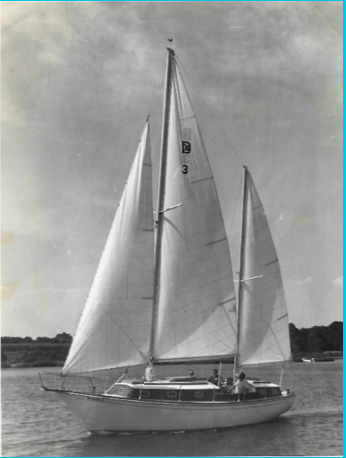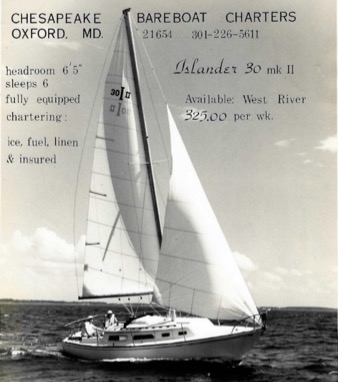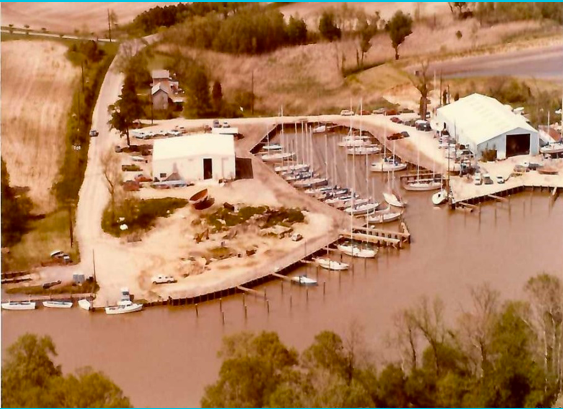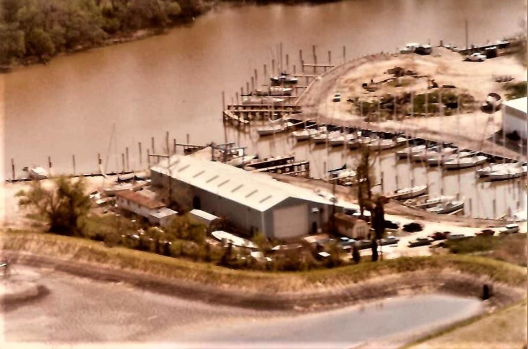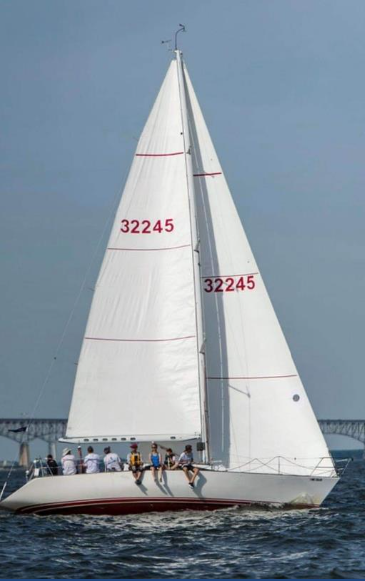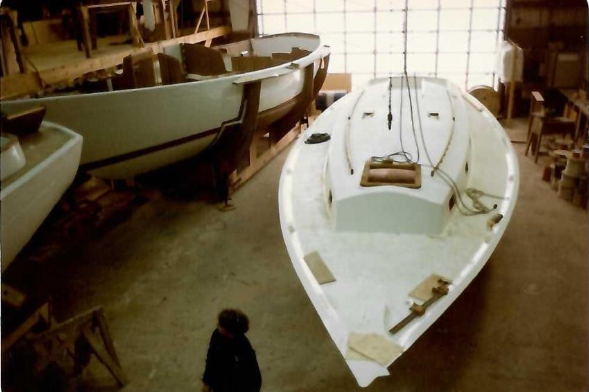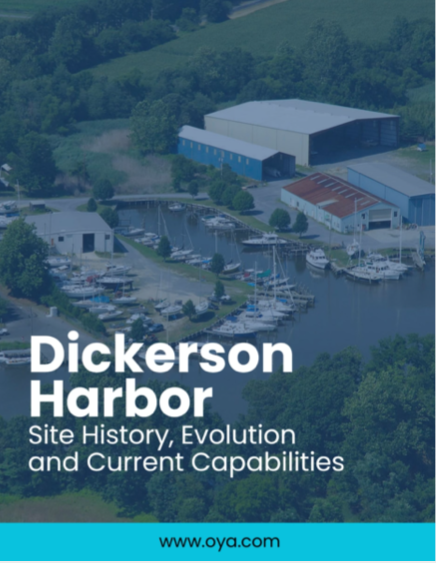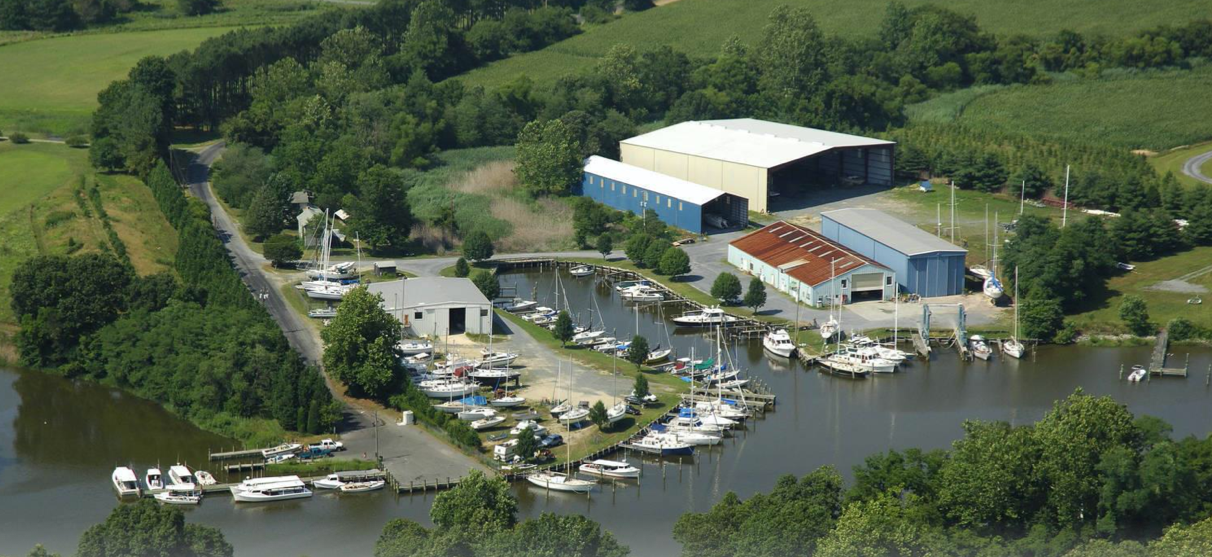
History of the Current Dickerson Harbor Boatyard Site
The story of our Dickerson Harbor Boatyard is important because of the way the boat culture, boat building, and boat service skills were brought to us, and remain today. It’s an important story about boatbuilding and now yacht repair on the Chesapeake Bay.
In the 18th Century, this small port at Dickerson Harbor existed as an agricultural shipping and receiving center. It was also an aid to the developing roads running up and down the Eastern Shore. With a significant route nearby (what is now MD Route 50), the farms producing tobacco, grain, vegetables, and lumber utilized this nearby site for shipping products and receiving needed materials and supplies. In many cases, horses dragged the produce from the fields. These wide range of products were floated away on barges and other Bay craft. One of the industries common to the area has been vegetable canneries. The Wrightson’s company in Easton had a bean and corn cannery. Harrison Jarboe in Bay Hundred (St. Michaels) had a tomato cannery. The Oxford/Trappe area had its tomato and bean cannery at what is now the main Dickerson shop. Each waterfront community had a crab and oyster dockside business. Today, J.M. Clayton in Cambridge, Harrison’s on Tilghman, and the Crab Claw in St. Michaels have retained this centuries-old flavor.
Dickerson Harbor was located at Trappe landing, a tiny port and small town at the head of La Trappe Creek. There was a common well, which was replaced by Mr. Dickerson in 1983 by the Shannahan Well Co. from St. Michaels. Wise Grain Company established a grain elevator on the same site and used the port for the shipping of locally farmed grain. After 1972, the granary closed. Tom Lucke, an Eastern Shoreman, Naval Academy graduate, and Johns Hopkins University engineering graduate, bought Dickerson boatbuilders in 1965. Tom relocated the business from Church Creek in Dorchester County to Trappe Landing in Talbot County. Tom removed the cannery and erected a sizeable boat building facility. The Church Creek carpenters commenced building the Dickerson 35’ hard chine ketch on La Trappe Creek in 1967.
Tom employed Ernie Tucker, a noted naval architect from Oxford, to re-engineer the Dickerson 35. The 35 originally had a hard chine design along the lines of traditional Chesapeake Bay craft. Tom wanted to improve the Dickerson 35 to become a substantial long-distance cruiser. Tucker’s round bilge design accomplished this goal.
In 1974, Tom Lucke realized that fiberglass construction had developed enough for him to begin building the Dickerson 36’ in fiberglass. Bob and Howard Lippincott of Riverton, NJ, were known worldwide for their boat construction skills in wood and fiberglass, as well as their high-quality gel coat and paint finishing skills. Howard Lippincott began molding the early Dickerson fiberglass hulls at the Lippincott Boatworks, in Riverton New Jersey. He often delivered one by trailer when he came to Oxford to sail his Starboat in local races.
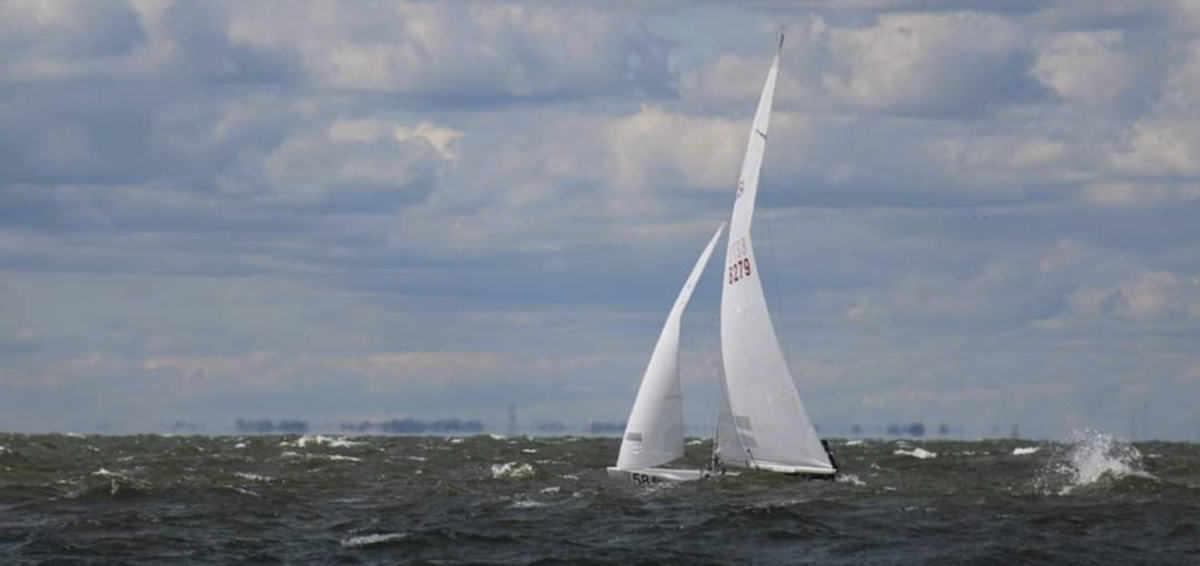
A Star racing one-design on teh choppy Choptank river
Howard’s brother Bob teamed up with the Firth family to buy another former Trappe Port parcel (which had the Wise Grain-works) to establish Chesapeake Marine Industries on the same harbor as Dickerson Boatbuilders. Wise then removed the grain elevators and moved the silos to the other side of MD Route 50 by helicopter. John remembers driving down Route 50 in the mid-’70s to find a helicopter struggling overhead with one of these grain silos! Bob Lippincott had the second large building erected on the site and was joined by his sons Billy and Jimmy. Bob and Billy continued the Lippincott tradition of boatbuilding, while Jimmy established a sail loft on the second floor.
In 1978, Ted Reed, his wife, and Buddy Somerville of Annapolis purchased Dickerson Boatbuilders and Chesapeake Marine Industries. This purchase brought the consoli¬dation of the four Trappe Landing parcels and the combining of skills from both facilities. Ted hired Andrews Miller of Cambridge to create a site plan, and provide engineering services, and a bulkhead design. Bloomingdale Construction Co. then dredged the harbor, and a new, higher bulkhead was constructed. The increased bulkhead height improved protection in the basin during hurricanes and allowed for ample slips
Some of the many designs built by Dickerson over the years included:
- Dickerson 35s, 36s, 40s, 41s, 50s
- Dickerson-Farr 37s
- Palmer Johnson (Swan) 34s
- Commercial dive boats for Sea Walker of the US Virgin Islands
- Workboats in fiberglass
- One-design racing sailboats
- Seidleman 25s

